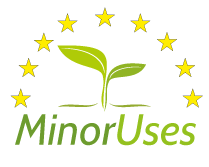|

The MUCF and the Chair of the Horizontal Expert Group (HEG), Ms Jana Johansen Hladilova, provided a short report from the Autumn HEG meeting:
The HEG was attended by experts from regulatory authorities, growers' associations, the European and Mediterranean Plant Protection Organization (EPPO) and the plant protection products industry associations.
The MUCF updated participants on the Explanatory Note on Minor Uses (ENMU) progress. This is a document developed by a writing group with experts from several EU Member States (Belgium, Denmark, France, Germany, Hungary, Ireland, Italy, Lithuania, the Netherlands, Spain and Sweden), Great Britain, Norway, Switzerland, and with support of DG SANTE's Legal Service and the MUCF.
Version Nr. 1 of the ENMU was presented at the December SCoPAFF meeting and is currently being shared on CIRCABC for commenting until 2022-01-13. This document is not intended to produce legally binding effects by its nature, but it can still answer many questions regarding minor uses. It will contribute to a more harmonised approach for minor use applications. It is envisioned to publish the Note in 2022. HEG experts will continue to work on this document and keep it updated.
In 2021 the MUCF conducted surveys on minor/major crops, minor crop definition criteria, minor/major uses, and the table of needs circulated to 27 EU Member States + Great Britain, Norway and Switzerland. Even though there are different criteria for defining minor uses among the member countries, HEG experts appreciated this work. All updated tables will be compiled and will be published in EUMUDA (European Minor Uses Database) during the year 2022 (https://www.eumuda.eu/).
Three member countries (Denmark, Germany and Portugal - i.e. one country representative per regulatory zone) held informative and inspiring presentations about dealing with minor use applications according to Article 51, focusing on risk assessment procedures.
Several questions that arose during the CEGs meetings were addressed during the HEG meeting. Availability of plant protection products in neighbouring countries, fair competition for growers, the possibility of mutual recognition and differences in the definition of minor use among the member countries were the main topics that were discussed.
The planning for the upcoming HEG meeting in 2022 has already started, and it was suggested to focus on setting Maximum Residue Levels (MRLs) for minor uses, residue extrapolation possibilities from major crops to minor crops, and challenges experienced by growers.

Réjane Mazier (co-Chair) summarised the meeting on behalf of CEG Mushrooms:
The Commodity Expert Group (CEG) mushroom meeting was attended by experts from several EU member states (Belgium, France, Germany, Greece, the Netherlands), Great Britain and Norway. The focus was again on the situation regarding the control of Dactylium spp. (cobweb disease). It was discussed and highlighted that there will be only one active substance for this need in the EU from mid-2023 onwards. An additional active substance to be used against this fungal pest will not be authorised and approved before 2025.
The control situation for the sciarid flies (Bradysia spp., Lycoriella spp.) and the mushroom phorid flies (Megaselia spp.) was reviewed by all participants. They concluded that due to the withdrawal of two active substances in recent years, there is a lack of efficient plant protection product (PPP) solutions available, but the option still exists to use biological alternatives for these two needs.

Participation call:
After the Spring CEG Fruits and Vegetables meeting, an MRL (Maximum Residue Level) issue of concern in radish production was discussed. Experts from this group decided to take action and compiled a position paper to have the concerns addressed at SCoPAFF. Five countries (Belgium, France, Germany, Italy and the Netherlands) shared information on radish production and protection, and the MUCF facilitated the data sharing and the finalisation of the document. The document was presented at the SCoPAFF Phytopharmaceuticals Pesticide Residue meeting in June. An extension of the transitional period in the legislative measure until the end of 2025 was voted for. This provides CEG Vegetable experts some more time to continue discussions on this issue (e.g. assigning radish leaves to a different MRL commodity group rather than kale) and generate additional residue studies on radish leaves, both for indoor and outdoor uses.
Experts from the CEG Vegetables decided to work further on this topic during the Autumn meeting, and currently, more information is being collected on these issues from different MUCF member countries. If you would like to participate by providing data and information, please contact the MUCF.
|
